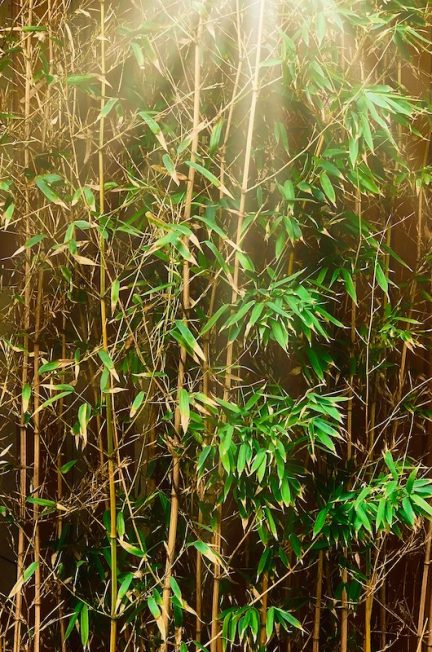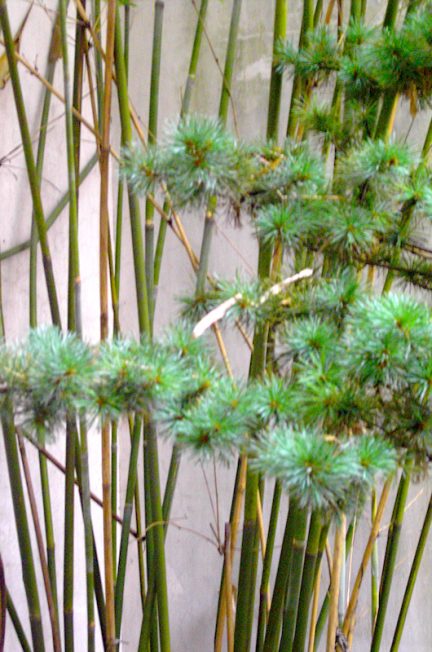Since we last wrote about this topic, the process of tracing bamboo production from Forest into Fabric has garnered much attention, and disheartened disinterest, for its potential for sustainability and traceability, in recent years.
According to a 2019 study published in the International Journal of Advanced Manufacturing Technology, bamboo fabric production can have a lower environmental impact than traditional cotton or polyester production.1 The study found that the use of bamboo can reduce water consumption and greenhouse gas emissions, and can be produced using fewer chemicals.
Additionally, a 2018 study in the same journal found that bamboo fabric can have anti-bacterial properties, potentially reducing the need for chemical treatments in the production process.2
However, there are still concerns about the sustainability of bamboo fibre and fabric production. A 2020 study published in the Journal of Cleaner Production found that the process can have negative impacts on soil quality and local biodiversity.3
Furthermore, a 2020 article in Euronews highlighted the potential for the production process to harm local communities and cause deforestation.4 Bamboo is a versatile and sustainable plant that has been gaining popularity as a material for textiles. While traditional processes, such as cellulose viscous production, for producing bamboo fibres involves harsh chemicals and significant environmental impact, alternative manufacturing processes have been gaining ground as being potentially more eco-friendly.
Processes such as Lyocell, Litrax-L1, and Tanboocel increasingly utilize closed-looped chemical or enzymatic systems that recycle bio and chemical products to minimize waste, making them more sustainable than the standard viscose process. According to a report by Textile Exchange, “Bamboo processed with closed-loop systems, such as Litrax-L1 and Tanboocel, have shown significant improvement on the environmental performance of bamboo textiles.”5
Viscose, Lyocell, Litrax-L1, and Tanboocel all have unique manufacturing processes that contribute to their sustainability, although it is still highly questionable to claim that standard viscose production could be sustainable. For example, Litrax-L1 is produced using a solvent that is 99.5% recycled, and the manufacturing process is able to recover 98% of the solvent used.6
Tanboocel, is a Chinese developed process which uses a closed-loop system that recycles 99.5% of the water and solvent used, and the waste water is treated before being discharged.7
Overall, these emerging manufacturing processes for bamboo fibres appear to offer a more sustainable alternative to traditional viscose production. By utilizing closed-loop systems and minimizing waste, these processes claim to be able to reduce the environmental impact of bamboo textiles and potentially reduce related workforce health risks. As companies continue to prioritize sustainability, it is likely that these new manufacturing processes will become more widely adopted in the industry. However, that still leaves the question of Forest to Fabric Traceability.
To address these concerns, efforts have been made to increase traceability in the supply chain of bamboo fabric production. At one time, apparently, Litrax offered to tag its source bamboo with DNA markers and provide a test for customers. That initiative seems to have fallen by the wayside, with little fanfare or commentary. Tanboocel has also indicated that it is looking into the issue of tracibility, and a 2018 study published in the Journal of Cleaner Production examined the use of blockchain technology to create a traceability system for bamboo fabric.8 The study found that such a system could increase transparency and accountability in the supply chain, helping to ensure that sustainable and ethical practices are being followed.
Despite these efforts, the industry as a who has yet to get behind any “global initiative” to instigate a the development and adoption of standards for Bamboo Forest to Fabric Traceability, thus it is still important for consumers to do their own research and exercise caution when purchasing bamboo fabrics or garments. As a 2015 article in the Journal, Fashion and Textiles notes, there is currently no universal standard for labeling bamboo fabric products as sustainable or environmentally friendly.9
So, while bamboo fibre production has the potential to be more sustainable and environmentally friendly than traditional viscose yarn manufacture, there are still concerns about its impact on the environment and health and wellbeing of the workforce and local communities. Whilst efforts are being made to increase traceability and accountability in the supply chain, consumers are still mostly left in the dark, and advised to exercise caution or do their own in-depth due diligence before making purchases.
Sources:
1. A. R. M. Saifullah, F. A. Jamaludin, M. A. Maleque, and M. A. Hazza Faizi Al Hazza, “Environmental sustainability of bamboo fiber for textile industry: A review,” International Journal of Advanced Manufacturing Technology 103, no. 5-8 (2019): 2381–2392.
2. Y. Yao, W. Xu, W. Chen, and Y. Wang, “Bamboo Fabric with Antibacterial Property Prepared Using Nano-TiO2 and Chitosan,” International Journal of Advanced Manufacturing Technology 95, no. 5-8 (2018): 2801–2809.
3. Y. Liang, X. Qian, J. Ma, and J. Song, “Evaluation of the ecological footprint of bamboo viscose fiber production: A case study in China,” Journal of Cleaner Production 274 (2020): 122792.
4. “Preferred Fiber and Materials Market Report 2020.” Textile Exchange, 2020, p. 26, textileexchange.org/wp-content/uploads/2020/03/Textile-Exchange_Preferred-Fiber-Material-Market-Report_2020.pdf.
5. “Litrax-L1.” Litrax, litrax.com/litrax-l1/.
6. “Tanboocel Bamboo Fiber.” Suzhou Myland Biomass Materials Co., Ltd., mylandbamboo.com/tanboocel-bamboo-fiber/.
7. L. Cheliotis, “Bamboo: eco-friendly fabric or environmental disaster?,” Euronews, November 30, 2020, https://www.euronews.com/green/2020/11/30/bamboo-eco-friendly-fabric-or-environmental-disaster.
8. F. Li, Z. Wang, Y. Liu, and Y. Li, “Blockchain-based traceability in the bamboo viscose fiber supply chain,” Journal of Cleaner Production 171 (2018): 1671–1683.
9. S. Huang and L. Shen, “Bamboo as a new fiber for sustainable fashion design,” Fashion and Textiles


